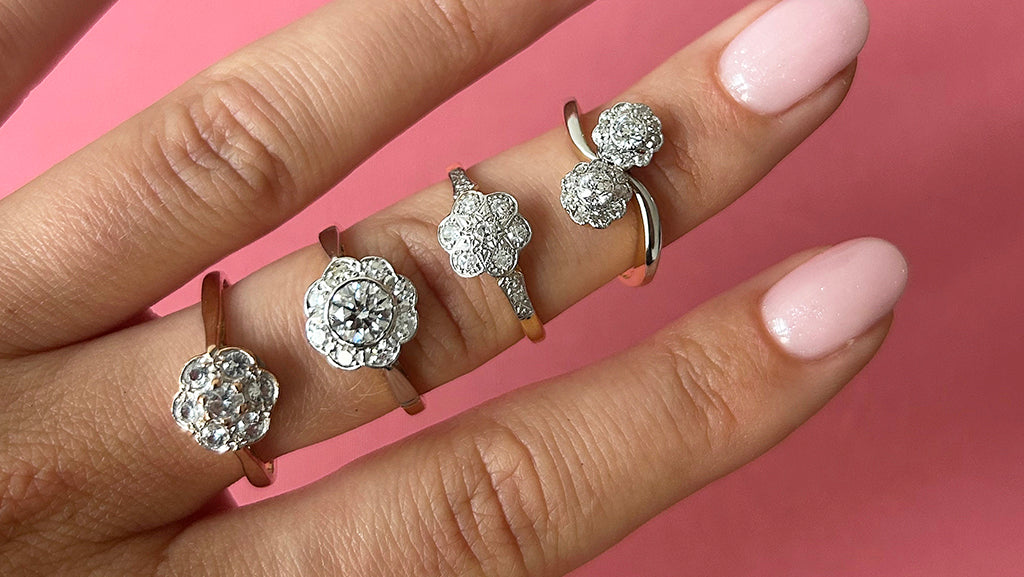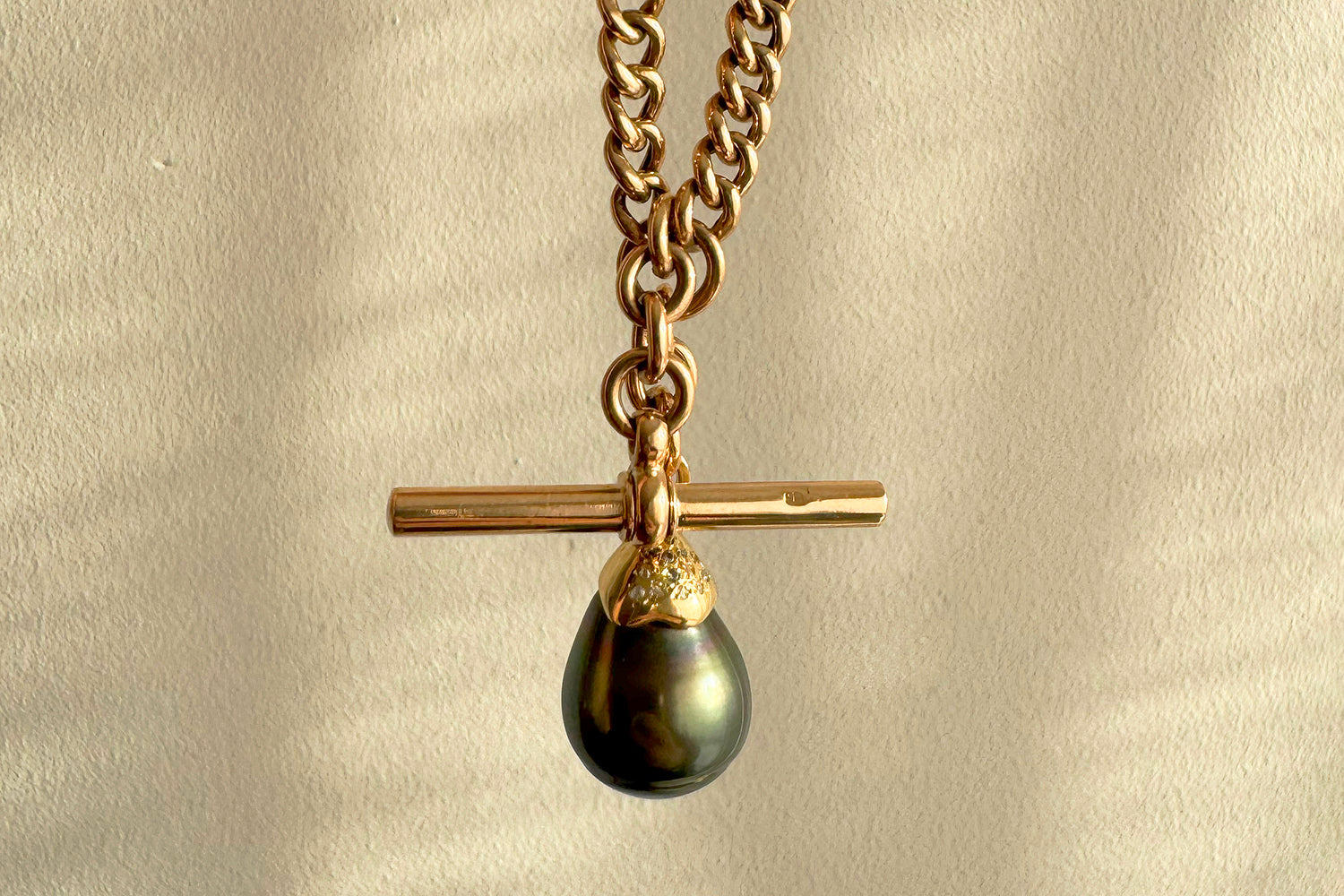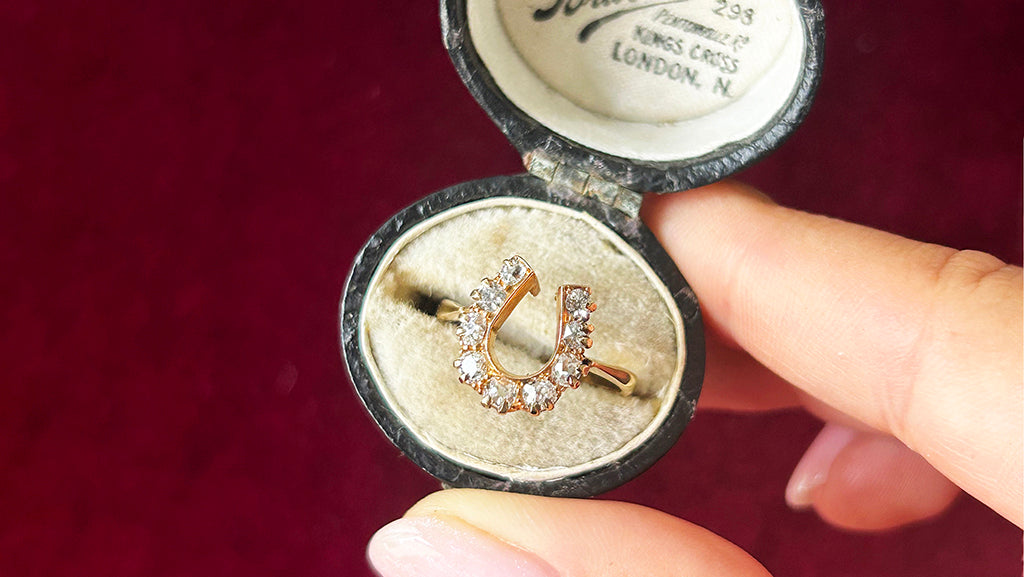
7 Questions to Ask Before Buying a Vintage Diamond Ring
There’s something undeniably romantic about choosing a vintage diamond ring. These one-of-a-kind treasures carry stories of past generations, exquisite craftsmanship and timeless design; But buying a vintage engagement ring isn’t the same as buying new. Whether you’re shopping online or visiting a vintage jeweller in person, asking the right questions can help you to avoid disappointment and ensure you’re investing in a piece that will be cherished for a lifetime.
Here, we explore seven questions you should ask before you commit to your diamond ‘forever’ jewel…
 Felicity, an antique Victorian diamond horseshoe ring
Felicity, an antique Victorian diamond horseshoe ring
1. Is this vintage diamond certified? If so, who issued the certificate?
Unlike modern rings, the average vintage diamond doesn’t come with a contemporary certificate of quality from an independent gemmological lab. A certificate from a reputable authority like the GIA (Gemmological Institute of America) or IGI (International Gemmological Institute) provides an unbiased assessment of a diamond’s carat weight, colour, clarity, and cut; but vintage diamond cuts often pre-date this universal system, and therefore can’t be judged by today’s rigid standards.
If a certificate isn’t available, it is at the very least important to ask the seller to offer a professional assessment of your diamond’s cut and carat weight. This information will help you to better understand the value of your ring, both in the present time and for investment or resale purposes.
2. Which era does this vintage ring hail from?
Antique and vintage rings span a wide range of design periods, from the ornate Victorian era to the bold geometry of Art Deco. Each period has distinctive hallmarks, materials, and construction techniques
Understanding the age of your vintage ring helps you confirm authenticity, plan for a proper care routine, and – most importantly - foster a deeper appreciation for its rich history.
Tip: Check out our blog post on hallmarking for an idea of official age indicators to look out for.
3. Has this vintage ring been restored or modified?
Restoration can breathe new life into a vintage ring, but extensive modifications may affect its integrity and value. For example, replacing old settings or re-cutting original diamonds can reduce collectability. If the ring has been restored, ask for an explanation of the work that was carried out with any proof available. Many reputable jewellers will have access to this track record through paperwork that the ring has acquired on its journey. High-quality restoration is not inherently a problem, but you deserve to understand if your investment has been dramatically altered in its lifetime.
4. What is the diamond’s cut, and what does this mean in layman’s terms?
Many vintage rings feature diamond cuts no longer found in modern jewellery, such as old European cuts, old mine cuts, or rose cuts. These hand-faceted cuts have larger facets and unique proportions that create a softer, more romantic sparkle than modern brilliant cuts. Understanding your diamond’s cut will prepare you to expect certain visual qualities in various levels of light, and help you to appreciate your diamond’s character rather than comparing it unfairly to machine-faceted contemporary stones.
Tip: Ask to view the diamond in natural daylight, as antique cuts often behave differently under artificial lighting. That’s because old cut diamonds were designed before the advent of mainstream electrical lighting, designed instead to dance beneath candlelight.

Jean, our vintage diamond plaque ring
5. Is the ring’s diamond setting secure?
Over decades – or even centuries – prongs can wear down and settings can subsequently loosen. A wobbly stone or thin claws can leave your diamond at risk of loss. If you have in-person access to the ring before buying it, check its setting by giving it a gentle shake by your ear – if you can hear a rattling sound, that indicates that the diamond is sitting loose. By gently touching the setting with your finger, you may also be able to feel if any prongs have lifted.
Better still, we’d recommend having a qualified jeweller assess the ring, if it hasn’t already been looked at. Here at The Vintage Ring Co., all of the jewellery you see on our website has been thoroughly checked over by a third-party assessor and had its settings repaired or reinforced where necessary. This isn’t the same for all pre-loved jewellers, however – so you may need to budget for re-tipping prongs or reinforcing the setting to ensure your diamond stays safely in place.
6. Which metal is this vintage ring crafted from? Has it been tested?
Vintage rings are largely crafted in platinum or 14ct/18ct gold, but occasionally we come across pieces made in silver or 9ct gold, both of which are softer metals which require a certain level of care. Many vintage rings were never hallmarked in the first place, and the stamps that are present may have worn away gradually over the time, making it difficult to identify the metal by eye.
Testing the metal provides assurance that you’re paying for what you think you’re buying, allows you to care for your ring properly, and helps you plan for any future resizing or repairs (some metals, like platinum, require specialist handling).
Tip: If the ring is described as platinum or high-carat gold, ask the seller to confirm that they can corroborate this through third-party testing.
7. Can the ring be resized, and are there limitations?
Antique rings aren’t always easy to resize. Delicate bands, intricate engraved patterns and claw settings can make major resizing complicated. For a deeper understanding of these complexities, check out our blog post on vintage ring resizing.
If your ring doesn’t fit perfectly first time round, ask your jeweller to talk you through your possible options. In some cases, a small adjustment is possible; in others, you may need to commission a custom enlarging insert or a ring snuggie.
Bonus tips for buying with confidence…
-
Research the seller: Look for customer reviews, professional accreditations, and transparent information about sourcing and certification.
-
Request detailed photographs. High-resolution images, including side views and under magnification, will help you to understand the quality and craftsmanship of your ring, making an informed judgement on the unique cut and colour of its diamond.
-
Get everything in writing. Certifications, appraisals, restoration records, and return policies should be documented before purchase. This can be as simple as hanging onto that email thread.
Choosing a vintage diamond ring is more than a transaction - it’s the start of a new chapter in an ongoing chronicle. These questions will help you protect your investment, avoid surprises, and feel confident that you’ve found a jewel as enduring as your commitment. When you buy thoughtfully, you’ll own a ring with unmatched beauty, history, and soul.
At The Vintage Ring Co., we specialise in sourcing authentic vintage and antique from the Georgian to the mid-century eras. Each piece is meticulously vetted for quality and authenticity, and we’re here to answer all your questions - before, during, and after your purchase. Explore our collection today for a unique milestone in your story.




